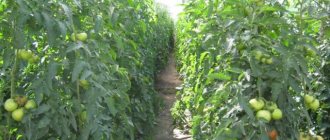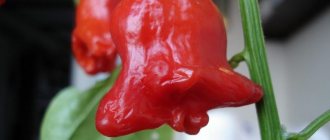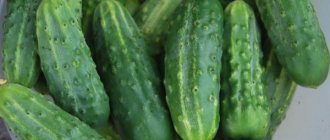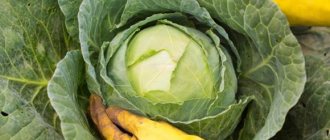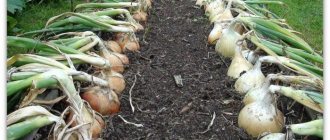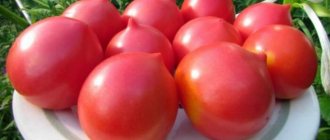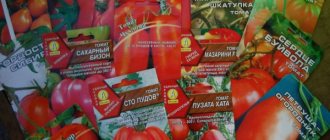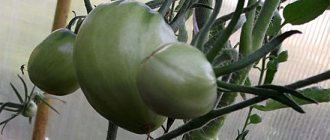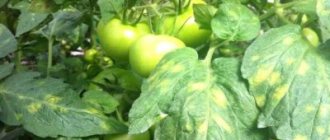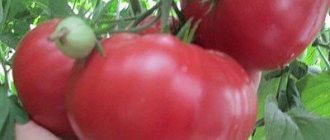Retz there are plants with complicated, or “carrot” leaves, which are determined by the gene och.
Typical tomato leaves are complex: odd-pinnate, odd-pinnate, or intermittently pinnate with alternating large and small lobes and segments.
Morphological and anatomical structure of tomato leaves
The leaf blade consists of many lobes.
The leaves are usually covered with a large number of glandular hairs, which are located on the entire surface of the plates; the hairs contain the largest, multicellular ones. The lower and upper sides of the leaf blade are covered with colorless epidermal cells. Hypodermis that can be stained with anthocyanin.
The stomata are simple, without side cells. Immediately below the epidermis there are 2-4 layers of columnar mesophyll cells, below there are several layers of rounded spongy mesophyll cells, between which large intercellular spaces are visible.
The lower epidermis consists of cells that have a colorless shape.
The shape of the cells, the epidermis, are quirks to the highest degree, this refers to the cells of the lower sides of the leaf, both in the lower and upper parts of the leaf, their number is much greater. We have a connection between the environment, air exchange and moisture evaporation. By means of liquid permeability of bacteria. First, they multiply in the substitial cavity, then settle in the intercellular spaces and infect the entire leaf. Through the mouth, phytopathogenic fungi that grow in the leaf penetrate into the leaf and carry out their conidiophores and sporangia through the mouth.
The surface of the leaves is covered with the lower and upper sides of numerous multicellular hairs. The largest hairs are along the central vein. Iron hairs are found mainly on the lower surface of the leaf. The role of hairs is not well understood. It is known that glandular hair contains chemicals that help protect plants from pests and pathogens. Under unfavorable conditions, the hair dies and turns brown, causing brown spots to appear on the leaf. Such plants are more susceptible to diseases. Thus, these harmful substances prefer to be located closer to the periphery of the leaf in the interveinal space, where the number of trichomes is minimal. Trichomes are not a barrier to the larvae of whiteflies and thrips, so they spread over the entire surface of the leaf. Female thrips prefer to feed and move along tree-lined residential buildings, where they feel more protected.
Columnar parenchyma consists of prismatic cells, spongy parenchyma consists of rounded cells. The number of chloroplasts in the cells is large, which ensures a high intensity of photosynthesis. All cells are connected by plasmodesmata, i.e. we can talk about a single cellular space called the symplast. The presence of such space facilitates the movement of viral particles along the symplast. Their movement is ensured by special transport proteins that can quickly drag the viral particle through the plasmodesmata, even if its size is larger than the diameter of the channel.
Water and minerals enter the leaf cells through xylem vessels, and plastic substances flow out through phloem vessels. Before entering the phloem, sucrose and other assimilates must be absorbed from the apoplast by the satellite cells of the phloem, and from them they are transferred to the phloem endings. Further along the concentration gradient and with the flow of liquid, sucrose enters the apoplast (intercellular spaces) of the stem, apical leaves, growing points and fruits (Chikov, 2007). Disruption of the normal movement of assimilates leads to various morphological and physiological changes in the plant as a whole.
The vessels formed by the activity of cambial cells are collected into veins, the totality of which is called leaf venation. Tomato, like most dicotyledonous plants, has reticulate veining. There is a central vein, dividing the leaf into right and left halves, and lateral veins of different orders, segmenting the leaf blade.
FIND OUT: The benefits of horseradish for the human body
Tomato flowers
They are bisexual, that is, each flower contains both female (pistil) and male (stamen) organs. This promotes self-pollination of flowers. In wild and semi-cultivated forms, the flowers are five-membered, consisting of five sepals, five petals, and five stamens. Such flowers usually produce small fruits.
Large-fruited varieties (various giants) are characterized by more complex flowers - polynomial. In many varieties, the first flower in the raceme is fasciated - fused from two to three flowers. It produces a large but ugly fruit. Such flowers are removed.
The flowers are collected in brushes (curl). In most cultivated varieties, the racemes are simple (non-branching) or intermediate - once branched. Amateur vegetable growers also have varieties with a complex raceme - up to 100 flowers (Wonder of the World, Kronprinz, etc.). In this case, 30-40 small fruits are formed in each cluster.
The anthers of the stamens contain pollen. Once on the stigma of the pistil, it germinates in the style and fuses with the eggs in the embryo sac. As a result, zygotes are formed, which then turn into seeds. This is fertilization. Tomatoes, as a result of self-pollination, produce pure-quality seeds. Cross-pollination occurs in exceptional cases, for example in the south (where an open type of flowering is observed in high temperatures) or in greenhouses, where tomatoes of different varieties grow nearby and their stems are located on top of each other. In this case, pollen of one variety, falling out of flowers, falls on flowers of another variety located below. Some varieties (Severyanin and others) form the first fruits without fertilization. They are seedless and fleshy. At the end of the season, normal fruits with seeds are formed on the plants, which are used for propagation. Tomato pollen is heavy, so it is carried by the wind over a distance of no more than 0.5 m. Insects, with rare exceptions, do not visit tomato flowers.
Analyzing the features of the anatomical structure of tomato leaves, the following can be noted:
- Many stomata, an uneven, reflective surface of the epidermis and an abundance of glandular hairs are a device for regulating leaf temperature in hot weather.
- At low temperatures, cells with vacuoles appear in the lower and upper epidermis, as well as in the hypodermis, colored violet due to anthocyanin, which ensures greater absorption of red spectrum rays by the leaf, etc. possibly contributes to an increase in leaf temperature.
Leaf shape is the most variable morphological character. In cultivated tomato, 307 mutant lines are known with various modifications in leaf shape and size (Holtan & Hake, 2003). The leaf is formed as a result of the regular division and elongation of cells, and changes in its shape and complexity depend on the direction of cell division, controlled by phytohormones. Gibberellins and auxins have been shown to influence the degree of leaf dissection (Sekhar & Sawhney 1991; Avasarala et al. 1996). Cytokinins can also act as inducers of leaf growth (Lutova et al., 2000).
For a number of genes, linked inheritance of leaf shape with other morphological characters has been established. For example, a weakly dissected leaf, determined by the Mo 755 gene, is associated with dwarf growth, a yellow growth point and the absence of anthocyanin, which indicates the localization of this gene on the second chromosome.
Based on the shape of the leaves and their position, there are 4 types of leaves:
- 1 type A simple leaf shape is characteristic of young plants of some varieties, for example, Pink Giant.
- Type 2 An ordinary tomato leaf normally has an odd-pinnate shape, the ovoid leaves are arranged oppositely or with a slight displacement, the number of leaflets is usually 7 or 9. In mutant plants, the lobes are heart-shaped. As the plant matures, the shape and size of the leaves changes towards enlargement and complexity, both as a whole of the entire leaf blade and individual leaves, some of which, in turn, become odd-pinnate.
- Type 3 The potato leaf type is found in a small number of varieties and, in addition to its similarity with a potato leaf, is characterized by a small number of leaflets with a smooth or slightly jagged edge, without intermediate leaflets and first-order leaves, dark green in color. The leaves are often arranged oppositely.
- Type 4 Leaves of the intermediate type, as a rule, do not have small lobes, and the leaflets have a small number of lobes. Leaves with a small number of lobes and without teeth along the edges are classified as broad-leaved forms.
Spraying tomato with growth regulators leads to changes in leaf morphology. The most pronounced effects were observed with the use of gibberellin. The leaves lengthen, the number of segments and their area decrease, and serration disappears. Treatment with cytokinins and auxins causes an increase in the number of leaf lobes, which acquire an elongated shape, which indicates a direct effect of hormones on meristem cells.
Sometimes climatic factors stimulate abnormal development of leaves, then new shoots appear on them. Typically, such growth is associated with an increased level of nitrogen in the plant or with a change from hot sunny to cool cloudy weather.
Under these conditions, there appears to be a delay in the transport of sucrose from the leaf, which causes its thickening and the accumulation of hormones in it, which, in turn, stimulate cell proliferation. Curvatures occur both due to the activity of new meristems and as a result of uncoordinated growth of already differentiated cells.
Tomato leaves are:
- Small, less than 15 cm;
- Average 15-25 cm;
- Large, more than 25 cm.
Leaf size varies depending on growing conditions.
In protected ground they take:
- For small sheet less than 30 cm
- For average -30-45 cm
- For large ones - more than 45 cm.
In the winter-spring turnover, larger leaves are formed, with a greater number of lobes and lobules. Smaller leaves develop in film greenhouses. Early ripening varieties have smaller leaves, while late ripening varieties have larger leaves with more developed lobes.
The color of the leaves can be gray-green, light green, green, dark green, yellowish-green, green with anthocyanin, gray, whitish, matte.
It varies depending on the variety and under the influence of growing conditions.
Leaf color is associated with the presence, absence, or different concentrations of pigments in the epidermal and mesophilic cells.
The color of the leaves is genetically determined and varies depending on the variety and under the influence of growing conditions and external conditions can modify it.
A change in normal leaf color indicates the development of age-related, physiological or pathological changes.
Options for color changes are chlorosis, anthocyanosis, zonal silver (chimera), or whiteness. Achlorophyll mutations, characterized by complete loss of chlorophyll and leaf discoloration, are rare. Plants with such genes in a homozygous state are not viable. Occasionally, under unfavorable growing conditions, these mutations appear in heterozygotes, but, as a rule, they soon disappear. More common are discolored plants that are experiencing an acute deficiency of certain mineral elements or due to a chemical burn.
Chlorosis and anthocyanosis can manifest themselves in different ways, both in location and in severity. If a change in color appears throughout the entire leaf blade, then the disorder is called obedim; if the symptom appears only between the veins, interveinal; if the tissue along the veins is damaged, it is called interveinal; if the periphery of the leaf is damaged, it is marginal. According to the degree of manifestation of disorders, diffuse, focal and severe chlorosis (antacyanosis) are distinguished.
Leaf aging is a natural process.
It manifests itself in changes and destruction of plastids, a decrease in the amount of chlorophyll and the accumulation of other pigments. The lower the leaf is located on the stem, the shorter its lifespan; the higher it is, the more complex its structure and longer lifespan it has. However, leaf age can be changed both by plant formation and by hormones. It is known that treatment of plants with cytokinins causes an increase in the synthesis of proteins and chlorophyll, an increase in the efficiency of photophosphorylation, i.e. the hormone has a rejuvenating effect.
How to form tomato bushes?
How many stems should tomatoes grow?
This directly depends on the variety.
Tall tomatoes
are best grown in one stem - to do this, constantly remove all the stepsons from each leaf axil.
With medium-growing and low-growing varieties
we need to do things differently. If you want to form a tomato into 2 stems, then to form the second stem, leave the stepson growing from under the first inflorescence; it is considered the strongest. We simply delete the remaining stepsons.
There is another option for forming low tomatoes
: first we lead the bush into one main stem, removing the stepsons on it up to 3-4 brushes. Then we select the strongest stepson and grow the plant into 2 stems.
After 1-2 inflorescences, we leave another stepson and then pinch off the main stem. Growth processes will intensify. Next, leave 3-4 brushes on the stepson and pinch.
Video - Forming tomatoes into 1 - 2 - 3 stems
When choosing options for forming a bush, do not forget to focus on the climatic growing conditions; this directly determines how many fruit clusters will have time to ripen.
If you don’t know how tall the plants will grow and can’t decide how to shape the tomato, it’s quite easy to calculate. Pay attention to the frequency of arrangement of flower clusters along the main stem - the less frequently they are located, the taller the plant will be.
In tall tomatoes, a brush usually forms after 2-3 leaves. The more often the brushes are located, the lower the plant will be.
Formation of the leaf apparatus
The structure of tomato leaves has the characteristic features of most dicotyledonous plants. When the seed germinates, the embryonic leaves turn into two cotyledons. Several mutant forms are known in which the formation of 3 or more cotyledons is possible. The shape of cotyledon leaves is normally lanceolate or narrowly elliptical; in mutant forms, the formation of pointed, round or thread-like cotyledons is possible.
As the seedling develops, true leaves appear alternately from the apical meristematic cone, arranged in a clockwise spiral. If the conditions of storage or germination of seeds are violated, the death of the meristematic cone is possible, as a result of which the seedling does not develop a bud, and the sprout is left without a continuation shoot. After some time, a continuation shoot is formed from the lateral meristems, and then the entire plant, but at the same time an important quality is lost - early ripening. The proportion of such defective plants is normally small (less than 1%). In case of improper storage or violation of seed extraction technology, the proportion of defective plants increases noticeably.
The number of leaves in determinate (low-growing) varieties is usually not regulated due to the short growing season.
In semi-determinate (medium-growing) and indeterminate (tall) varieties, regulation of the number of leaves is desirable, because their excess lengthens the ripening period of the crop, while the lack of leaves leads to a decrease in the overall yield due to a lack of plastic substances. Removing leaves usually begins as needed after picking and planting the plants in a permanent place, removing no more than 2 leaves at a time. When planting at an angle, you have to remove the lowest leaves.
You can also cut off part of the leaf blade when the leaves cannot be removed yet, but greater shading or other factors are created. All these actions shift the balance of plant development to the generative type and help accelerate the ripening of fruits and the formation of new inflorescences.
To obtain a high yield, we leave a certain number of leaves on the plants of each variety or hybrid, depending on the variety, and this value depends on the stage of plant development, the characteristics of a particular crop rotation and lighting.
It should be borne in mind that assimilates from the leaves are first sent to the upper part of the plants, and only then down to the roots. In addition, the upper leaves provide assimilates to the fruits and growing apex, and the lower leaves provide the roots.
Removing the lower leaves reduces the amount of assimilates reaching the root, which ultimately weakens the plant and reduces its productivity. The lower leaves should be removed when necessary and unnecessary, after the fruits ripen or are removed, as well as in case of severe waterlogging, to avoid disease damage.
Usually we leave one or two whole leaves at the bottom of the plant and remove them after removing the fruits. This technique reduces the likelihood of fruit cracking due to excessive watering.
The leaves contain glycoalkaloids (tomatine, tomatidine, etc.) and essential oil, which gives the characteristic smell of tomato. Alkaloids have a toxic effect on insects, so tomato leaves are still used to make infusions and decoctions used to control sucking pests (Izhevsky, Izhevskaya, 2004).
Botanical description and structure of tomato
Tomato or edible tomato (Lycopersicon esculentum (L.)) is an annual herbaceous plant of the Solanaceae family. Its relatives include tomato vegetables: potatoes, blue eggplant, peppers.
Tomato vegetables
The vegetable Lycopersicon esculentum has three varieties:
- ordinary (var. Vulgare) – ¾ of the varieties belong to this variety with a thin lodging stem, red or yellow berries;
- standard (var. validum) – thick straight stem, corrugated leaves, red, pink, yellow fruits;
- large leaf (var. grandifolium) – the leaf is similar to a potato, the fruit is red or pink.
The structure of a tomato depends on the variety.
The structure of a tomato
The root system is taproot; when grown in seedlings, plants are planted to create a fibrous system. Forms additional roots on the stem; under good conditions, rooting of cuttings and stepsons is possible. Indeterminate varieties develop root masses up to 2 m in diameter.
- The stem is hollow, juicy, with hairs; as the plant develops, the tomato becomes woody. There are two types: determinate - ends in an inflorescence (2) ;
- indeterminate - with endless development, requires the formation of a bush.
The role of leaves in the life of a plant
The main function of the leaf is the formation and accumulation of organic matter due to light energy from water and carbon dioxide through photosynthesis. This function can be performed to a lesser extent by other parts of the plant - stems and fruits, but the anatomical structure of the leaves allows this to be done most effectively. The function of the “upper end motor” of water is no less important: due to the transpiration of water and the release of liquid through hydathodes (water pores), the sap moves upward and cools the plant.
The hormonal function of leaves is also important as the main source of gibberellins and abscisic acid (ABA). From the leaves, these hormones can passively move throughout the plant both through the phloem vessels (downwards) and through the xylem (upwards).
Its parts are especially flexible. At the same time, the synthesis of auxins is reduced. Nitrogen fertilizing has the opposite effect: the content of auxins increases and gibberellins decreases. With a lack of nitrogen and water deficiency, the concentration of ABA sharply increases. The concentration of this hormone changes rapidly depending on conditions. Under conditions of water deficiency, the concentration of ABA quickly increases, the hormone moves from chloroplasts to stomata, causing an outflow of K + radiation from the guard cells. as a result, the osmotic pressure in the cells drops and the stomata close. From the moment of exposure to the hormone until the stomata close, approximately 10 minutes pass.
Obtaining tomato seeds
Our collection consists of only proven varieties, so the final stage of working with tomatoes is obtaining seeds. The process is simple. In order for the variety to improve from year to year, I take early-ripened fruits for seeds, large for this variety, without signs of disease. Such fruits must be marked during the ripening period. To do this, I use white plastic film cut into strips. A tied ribbon means that no one should pick this fruit.
After the fruit acquires the color characteristic of a given variety: red or orange, malachite or pink, yellow or black, it needs to ripen for 10-12 days. This can be done by leaving the fruit hanging on the bush or picking it and storing it in a warm, bright place. You need to store no more than the specified period, otherwise the seeds will begin to germinate inside the fruit. Then we cut the fruit along the seed chambers and select the seeds with a spoon. Place the seeds in a jar, add a little water, cover with a lid with a hole or cloth and keep for 4-5 days in warm conditions. During this time, the flesh begins to ferment and loses its viscosity. A characteristic film appears on the surface. Add water to the jar almost up to the neck and shake vigorously. After settling, unripe seeds rise up along with the flesh, and full-fledged seeds settle to the bottom. Drain the top part and rinse the seeds that have settled to the bottom under running water. We dry the seeds for 2 weeks at room temperature, pack them in thick paper and store them at room temperature. Tomato seeds remain viable for up to 8 years.
I wish you a full-fledged, environmentally friendly harvest.
Text and photo: Elena Litvyakova, winner of 4 diplomas at the Agrorus exhibition.
